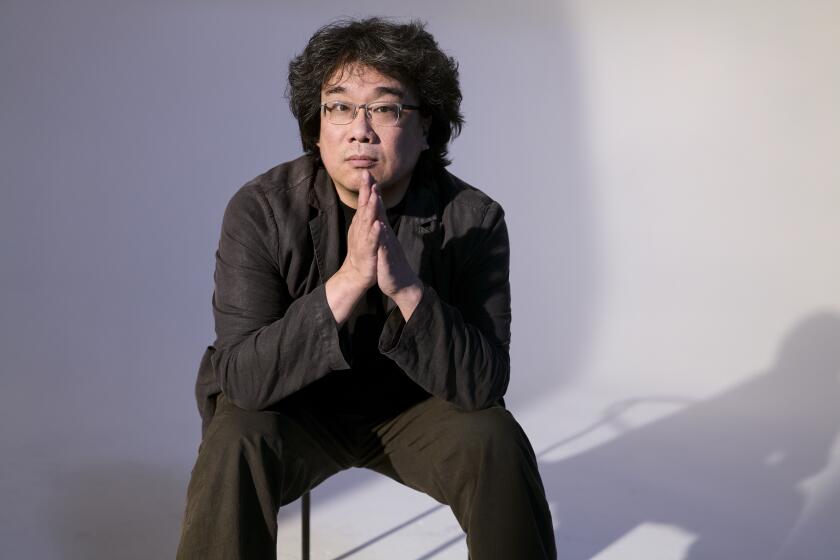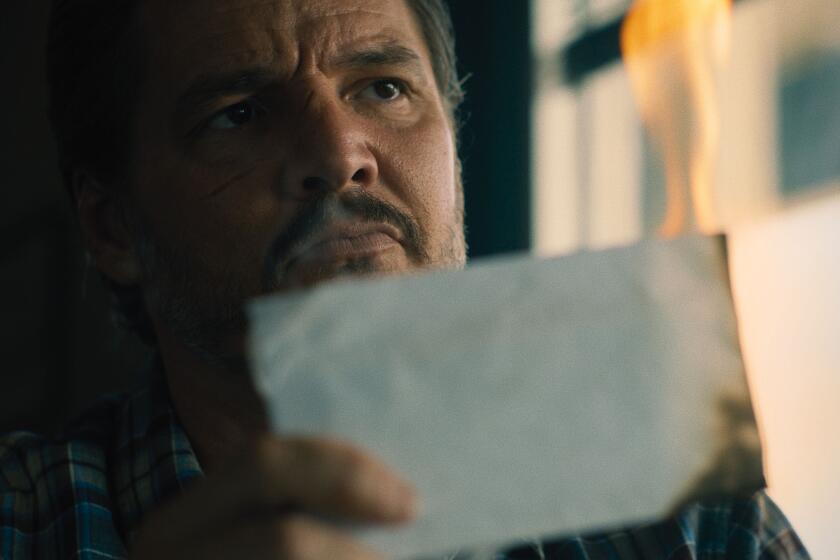Review: Overlong ‘Maze Runner: The Death Cure’ loses its way
- Share via
Of the dystopian young adult franchises that “The Hunger Games” hath wrought, “The Maze Runner” series has always been one of the most forthrightly entertaining — and the sweatiest. But that sweat is evidence of what makes this trilogy work, because, as capably directed by Wes Ball, it takes off at a full sprint and never slows down. It can be a pleasantly pummeling experience, an adrenaline-drenched ride, hot on the heels of the appealingly energetic star Dylan O’Brien. In the third and ostensibly final film, “Maze Runner: The Death Cure,” Ball and company go for broke and push the pyrotechnic action to the brink of unpleasant.
This franchise brings a boyish, impish energy to the teen apocalypse genre. “The Hunger Games” films were nakedly emotional, each tragedy channeled through the primal scream of Jennifer Lawrence’s Katniss. “Divergent” et al., were too fastidious, cold, clean and remote to connect. But “Maze Runner,” adapted by T.S. Nowlin from James Dashner’s novels, brings grime and grit to this race for survival in a dystopian post-civilization world that’s eating its young.
“The Maze Runner” was straightforward and task-oriented — a bunch of teens dropped into a mysterious glade have to try and escape through a maze every day — and the series never loses sight of that ethos. The maze is metaphorical rather than physical now, as Thomas (O’Brien) tries to escape the maze of a crumbling civilization corrupted by the evil corporation WICKED. Thomas and his young cohort have found themselves WICKED’s test subjects, as they’re immune to the Flare disease, which turns humans into bloodthirsty “cranks.”
As we discovered in the second film, “Maze Runner: The Scorch Trials,” this apocalyptic tale is actually a zombie movie, an element that gives the whole enterprise that much more bite.
What Thomas can do is run, and run he does, often without thinking the whole thing through. He ran out of the maze and into WICKED’s lair. He ran out of WICKED and straight to a group of Patagonia-clad resistance fighters seeking safe haven (or a Burning Man camp). His goal is always just to get out, with all of his friends alive.
“The Death Cure” hits the ground at a rollicking gallop, with a stunning, classical western-inspired opening sequence, as Thomas stages the rescue of his friend Minho (Ki Hong Lee) from a moving train. He and his team of rebels hijack a train car and a cargo plane with a system of hooks, cables, rusty pickup trucks and sheer will. But, they snag the wrong car, and Minho is transported to WICKED HQ in the last standing city to withstand torturous trials as scientists try to extract and develop a virus-fighting serum. When Thomas sets off on yet another rescue mission, things get complicated when he discovers his former flame Teresa (Kaya Scodelario) is one of the scientists working on the serum (the “death cure”).
The overall plot itself isn’t all that complex, a straightforward rescue mission that requires breaking into a fortress in order to break out. But the path is riddled with obstacles, including a leprous Walton Goggins, who leads an uprising at the walls of the city, as well as old friends from the Glade popping up left and right and an army of cranks and super-soldiers bearing down in all directions.
The sheer scope of the film’s third act is breathtaking, featuring children on a perilously dangling bus and a massive guerrilla uprising fought in the streets. Ball and screenwriter Nowlin keep a tight grip on the tone and the relentless pace, but they often back the story and characters into corners that only a deus ex machina can fix. By the time the third or fourth savior swoops out of the sky, it’s just too obviously contrived and a little bit lazy, from a writing perspective.
Ball clearly embraces the maximalist approach, but as the film pushes the two hour, twenty minute mark, the control goes out the window. It devolves into a mass of fiery explosions, crunching bone, strobing light, crumbling skyscrapers and a wall of noise. The sneering villain, Janson (Aidan Gillen) becomes a caricature, a boogeyman who can’t be killed. Lost in this orange mass is any earnest or earned emotion. It’s overwhelming, numbing, and exhausting. In “The Death Cure,” the “Maze Runner” pushes it to the limit and ultimately ends up spent.
Katie Walsh is a Tribune News Service film critic.
-------------
‘Maze Runner: The Death Cure’
Running time: 2 hours, 22 minutes
Rating: PG-13, for intense sequences of sci-fi violence and action, language, and some thematic elements.
Playing: In general release
See the most-read stories in Entertainment this hour »
Movie Trailers
More to Read
Only good movies
Get the Indie Focus newsletter, Mark Olsen's weekly guide to the world of cinema.
You may occasionally receive promotional content from the Los Angeles Times.









